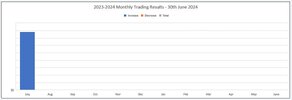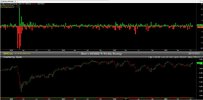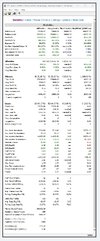- Joined
- 28 December 2013
- Posts
- 6,392
- Reactions
- 24,319
Why are a few traders successful?
The simple answer is that the majority of traders are losers. Trading carries inherent risks, and many traders end up losing money in the markets, even more than they can afford. However, with the right precautions, these risks can be managed.
The most common reasons traders struggle include
(1) Insufficient knowledge or experience.
It takes time to develop the skills and experience to trade well. Jumping in prematurely often leads to losses.
(2) Emotional decision-making.
Fear, greed, and panic can cloud judgement and cause poor trading choices. Mastering emotions is critical. If you don't get this one right the game is most likely over before it begins.
(3) Lack of trading discipline.
Straying from risk limits, overriding system rules, or trading plans usually hurt trading outcomes. Developing discipline takes work, time, and energy.
(4) Overtrading.
Been there, done that. Excessive trading activity often just racks up fees and creates a distraction. Less is often more with trading.
(5) Inadequate risk management.
Sloppy money management means unavoidable losses become catastrophic. Risk control must be robust and your primary concern.
(6) Impatience.
Trying to force wins accelerates losses. Patience and waiting for opportunities are integral parts of trading. Timing the entry is important.
(7) Not knowing when to sell.
Simply holding a position too long will eventually turn a winner into a loser.
Even seasoned traders face losses at times
It's not because of their trading strategy but rather due to the fact that markets are unpredictable. However, those who trade prudently, addressing the above common pitfalls, put themselves in a much better position to navigate risks and achieve lasting success. The keys are education, emotional maturity, discipline, risk awareness, and patience.
Footnote
Trading well is achieveable for those who respect the challenge and commit to it.
Skate.
The simple answer is that the majority of traders are losers. Trading carries inherent risks, and many traders end up losing money in the markets, even more than they can afford. However, with the right precautions, these risks can be managed.
The most common reasons traders struggle include
(1) Insufficient knowledge or experience.
It takes time to develop the skills and experience to trade well. Jumping in prematurely often leads to losses.
(2) Emotional decision-making.
Fear, greed, and panic can cloud judgement and cause poor trading choices. Mastering emotions is critical. If you don't get this one right the game is most likely over before it begins.
(3) Lack of trading discipline.
Straying from risk limits, overriding system rules, or trading plans usually hurt trading outcomes. Developing discipline takes work, time, and energy.
(4) Overtrading.
Been there, done that. Excessive trading activity often just racks up fees and creates a distraction. Less is often more with trading.
(5) Inadequate risk management.
Sloppy money management means unavoidable losses become catastrophic. Risk control must be robust and your primary concern.
(6) Impatience.
Trying to force wins accelerates losses. Patience and waiting for opportunities are integral parts of trading. Timing the entry is important.
(7) Not knowing when to sell.
Simply holding a position too long will eventually turn a winner into a loser.
Even seasoned traders face losses at times
It's not because of their trading strategy but rather due to the fact that markets are unpredictable. However, those who trade prudently, addressing the above common pitfalls, put themselves in a much better position to navigate risks and achieve lasting success. The keys are education, emotional maturity, discipline, risk awareness, and patience.
Footnote
Trading well is achieveable for those who respect the challenge and commit to it.
Skate.










